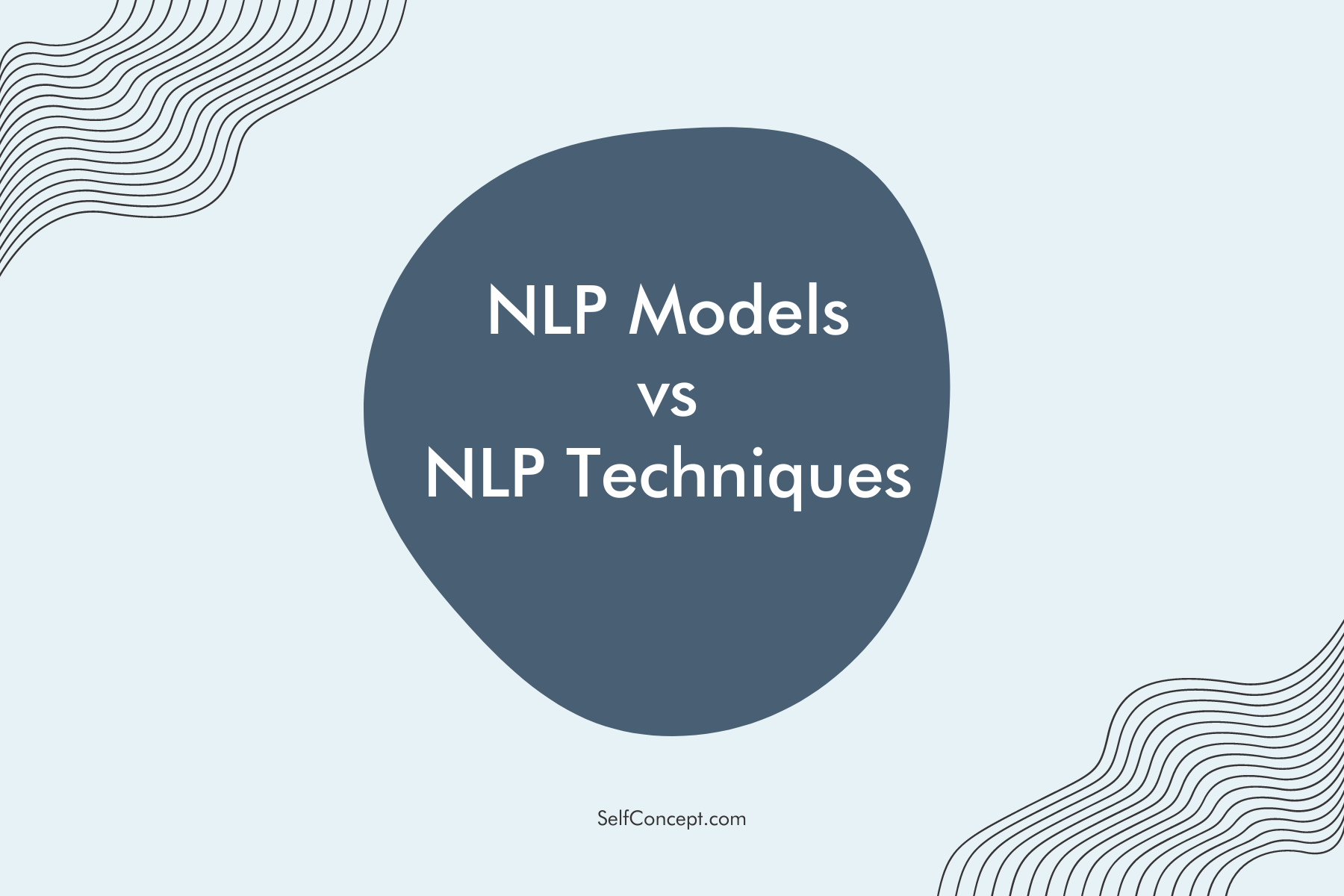Get Started Now: take the 60-second, self-concept assessment and discover your potential!
BLOG

NLP Essentials: Models vs. Techniques - The Ultimate Guide
“If models are the blueprints, techniques in NLP are the magic wands – the practical tools that bring those blueprints to life.”
In the whimsical world of Neuro-Linguistic Programming (NLP), two stalwart pillars hold up the enchanted castle: models and techniques.
These elements are the core ingredients of NLP's secret sauce, blending together to concoct the elixir of profound personal and professional transformation. Though they might sound like characters from a fantasy novel, models and techniques serve distinct roles in this transformative journey. So, grab your wand and let's delve into the delightful differences between these two NLP essentials.
The Grand Blueprint: Models in NLP
Think of models in NLP as the master blueprints of a grand architect. They are comprehensive frameworks that decode the mysteries of human behavior, thought patterns, and communication styles. These conceptual maps guide practitioners through the labyrinth of the human mind, making sense of the twists and turns that define our experiences. Models are distilled from the behaviors of high achievers and effective communicators, offering a structured approach to replicate their success.
Examples of NLP Models:
The Meta-Model: This linguistic model is like a wizard's spellbook, identifying and challenging the distortions, deletions, and generalizations in our language to foster clearer communication and understanding.
The Milton Model: A mesmerizing collection of hypnotic language patterns designed to subtly influence and guide others through indirect suggestion.
The Self-Concept Model: Created by Steve Andreas, this model works like a magical mirror, transforming one's self-identity and beliefs to foster a positive self-image and achieve personal goals.
Models in NLP lay down the theoretical groundwork, providing insights into why certain strategies work and how they can be applied to spark change.
The Magic Wand: Techniques in NLP
If models are the blueprints, techniques in NLP are the magic wands – the practical tools that bring those blueprints to life. These are the specific strategies or processes designed to achieve particular outcomes, such as banishing unwanted behaviors, dismantling limiting beliefs, or summoning desired emotional states. Techniques are the hands-on applications of the insights gained from NLP models, offering a step-by-step approach to weaving change into reality.
Examples of NLP Techniques:
The Swish Pattern: A nifty trick for transforming unwanted behaviors or reactions by replacing them with more desirable ones.
Anchoring: This technique is like planting a magical trigger in your mind, associating specific emotional states with physical or sensory cues to summon those states at will.
Reimprinting: A method for revisiting and transforming the emotional impact of past experiences, akin to rewriting the pages of your personal storybook for healing and growth.
Techniques are the practical spellcasting components of NLP, guiding practitioners and clients toward their desired transformations.
A Dance of Differences and Harmony
While models and techniques in NLP serve different purposes, they dance together in perfect harmony. Models provide the overarching framework necessary to wield techniques effectively, while techniques offer a means to manifest the theories and principles of models into tangible results.
Scope and Application: Models offer a wide-angle lens on human psychology and behavior, while techniques zoom in with laser focus to address specific issues or goals.
Theoretical vs. Practical: Models are the theoretical constructs that explain the underlying mechanisms of change, whereas techniques are the practical tools used to enact these changes.
Flexibility and Adaptability: Models allow for a flexible approach to problem-solving, accommodating a myriad of issues and goals. Techniques, while versatile, are more structured and targeted in their application.
Grasping the distinction between models and techniques in NLP is essential for any practitioner aiming to conjure effective and lasting change. By blending the wisdom of models with the practical prowess of techniques, NLP practitioners can navigate the complex landscape of human behavior and thought processes, guiding their clients toward realizing their fullest potential.
The Magical Interplay
In the end, the interplay between models and techniques in NLP highlights the comprehensive and adaptable nature of this transformative practice. Whether you're a seasoned NLP sorcerer or a curious novice, understanding the roles and functions of models and techniques is key to unlocking the full power of NLP on your journey of personal and professional transformation.
If you would like to learn and practice the core NLP techniques with us later this week, go here.
Become who you want to be
Sign up to our newsletter and never miss another amazing offer.
Self-Concept Research Group
Self-Concept Conditions
Copyright © 2026 SelfConcept.com.

